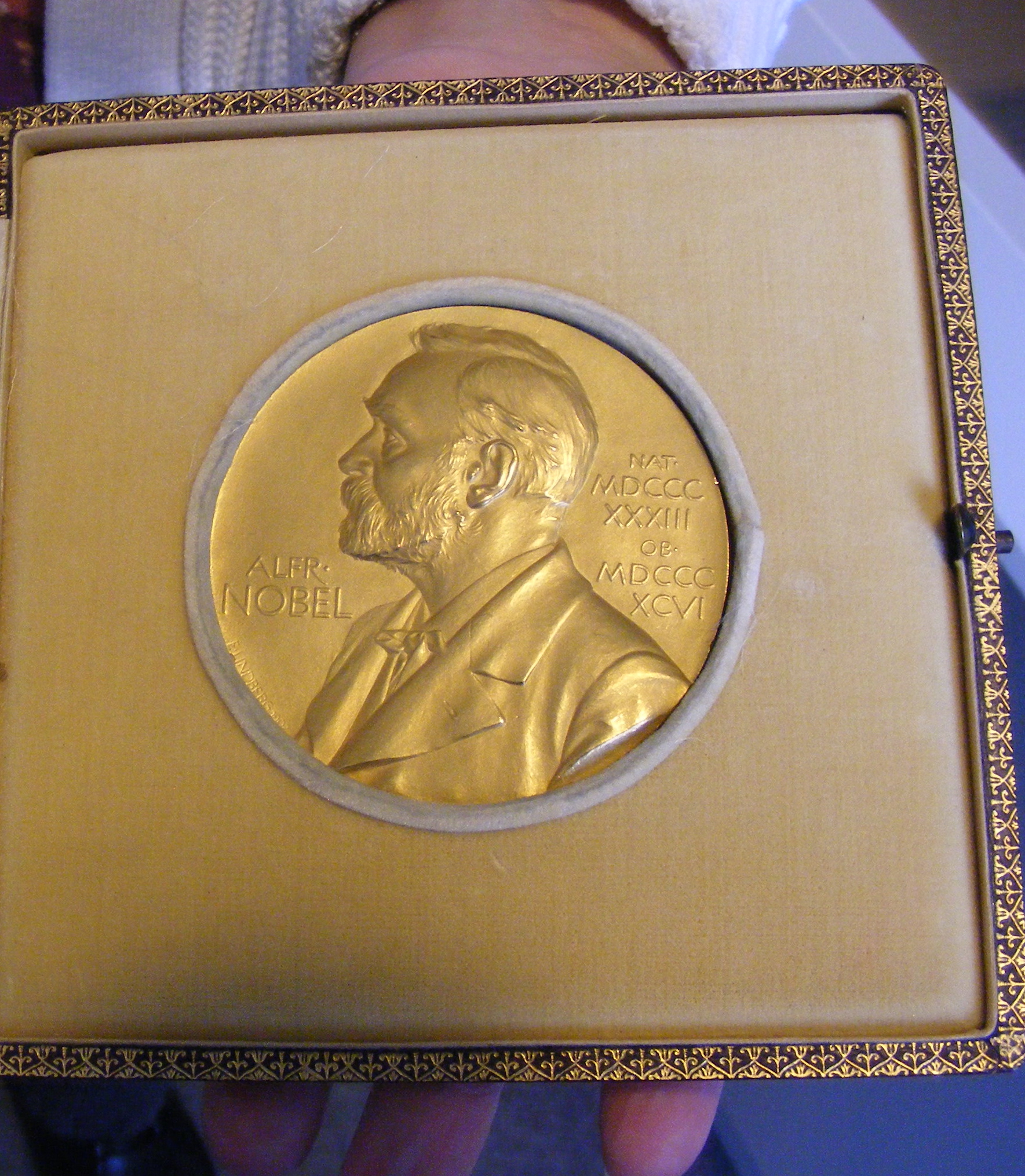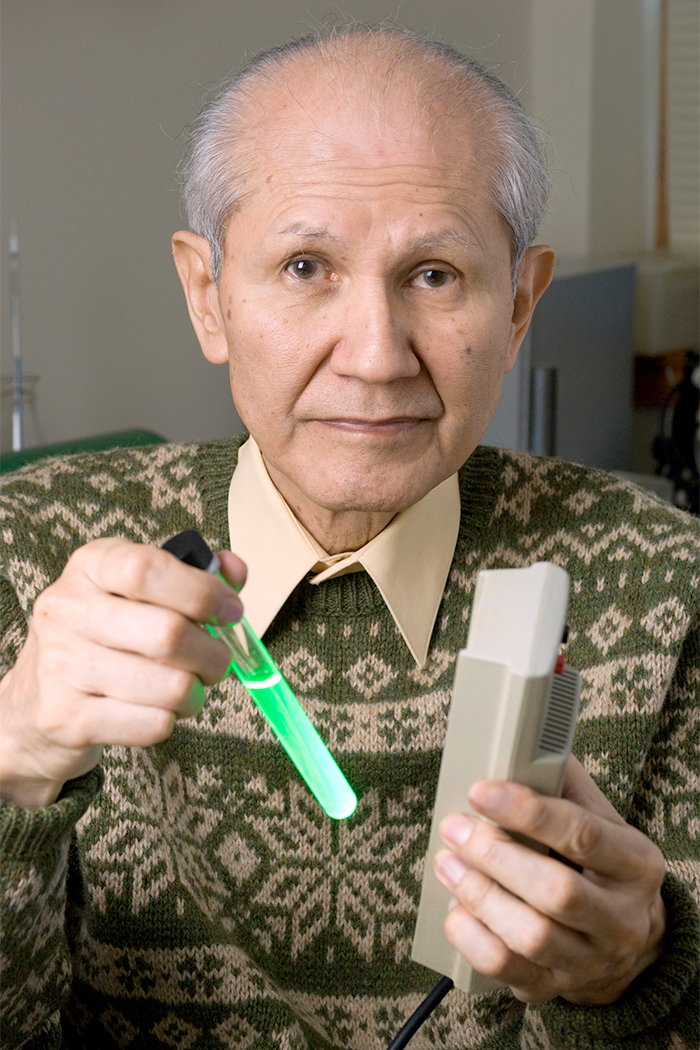A Long Nobel History

The 2020 Nobel Prizes were announced this week, recognizing some of the world’s most important academic, cultural, and scientific advances. And the list of Nobel Prize winners who have an affiliation with the Marine Biological Laboratory (MBL) grew longer once again.
Three scientists shared the 2020 Nobel Prize in Physiology or Medicine for “the discovery of the Hepatitis C virus.” One is Charles M. Rice of Rockefeller University, who was a student in the MBL Physiology course in 1973 and course staff associate in 1975. Rice shared the prize with Harvey J. Alter of the National Institutes of Health and Michael Houghton of the University of Alberta.
With the addition of Rice, 59 Nobel Prize laureates have an MBL affiliation as a researcher, faculty, or student. Of those, 43 won the prize in Physiology or Medicine, 15 in Chemistry and one in Physics.
To see MBL’s Nobel history firsthand, you needn’t travel further than the MBL-WHOI Library, which is home to Thomas Hunt Morgan’s 1933 Nobel Prize in Physiology or Medicine. Morgan won the first Nobel Prize ever given in the field of genetics for his work describing the role of chromosomes in heredity. His family gifted his Nobel Prize diploma and medal to the MBL in 2012.
 Thomas Hunt Morgan’s 1933 Nobel Prize in Physiology or Medicine on display in the MBL-WHOI Library.
Thomas Hunt Morgan’s 1933 Nobel Prize in Physiology or Medicine on display in the MBL-WHOI Library.Morgan’s MBL history is nearly as old as the MBL itself. He first came to Woods Hole as a student in 1889, just one year after the MBL opened its doors. For the next half-century, Morgan returned nearly every summer to conduct research, eventually building a summer home in Woods Hole. He served as an MBL trustee and/or Corporation member almost continuously from 1890 until his death in 1945.
“Woods Hole has had a central place in the hearts and lives of the Morgan family for over 122 years” said Barbara Morgan Roberts of Mission, Kansas, Morgan’s oldest granddaughter in 2012. “We can’t imagine leaving our grandfather’s Nobel Prize any other place than at the MBL."
 Osamu Shimomura holds a test tube containing green fluorescent protein (GFP), and a lamp that shines ultraviolet light, which causes it to glow. Credit: Tom Kleindinst
Osamu Shimomura holds a test tube containing green fluorescent protein (GFP), and a lamp that shines ultraviolet light, which causes it to glow. Credit: Tom KleindinstIn 2008, MBL’s Osamu Shimomura garnered a Nobel Prize for his discovery of Green Fluorescent Protein (GFP) in the glowing jellyfish Aequora. GFP, which is now widely used to visualize life at the microscopic level, is one of the most important tools in contemporary science and medicine. He shared the prize with Martin Chalfie of Columbia University, and Roger Y. Tsien of University of California, San Diego. Shimomura was a year-round investigator at the MBL from 1981 to 2001.
In 1995, Christiane Nüsslein-Volhard of the Max Planck Institute for Developmental Biology and Eric Wieschaus of Princeton University were awarded the Nobel Prize in Physiology or Medicine for discoveries concerning the “genetic control of early embryonic development.” They shared the prize with Edward B. Lewis, from the California Institute of Technology (Caltech). Nüsslein-Volhard and Wieschaus served as faculty members of MBL’s Embryology course in the 1980s. Weischaus, who also served as faculty in the Physiology course, was actually a student in the embryology course in 1969.
“It was one of the formative moments in my career as a scientist,” Wieschaus said during a 2003 Friday Evening Lecture at the MBL. "I came to Woods Hole knowing that I wanted to study embryos…At Woods Hole I was exposed to a much broader range of organisms and embryos - from squid to sea urchins. I was overwhelmed by the beauty of it all, how each individual species seemed special and unique."
MBL’s advanced research training courses are known internationally for kick-starting scientific careers. And, to date, 15 alumni of MBL courses have gone on to win Nobel Prizes. Part of the “special sauce” at the MBL that makes it such a dynamic place for scientific discovery is its convening power. It’s a place where curious people at all phases of a scientific career interact to pursue research—from students to early-career scientists to Nobel Laureates, both present and future.